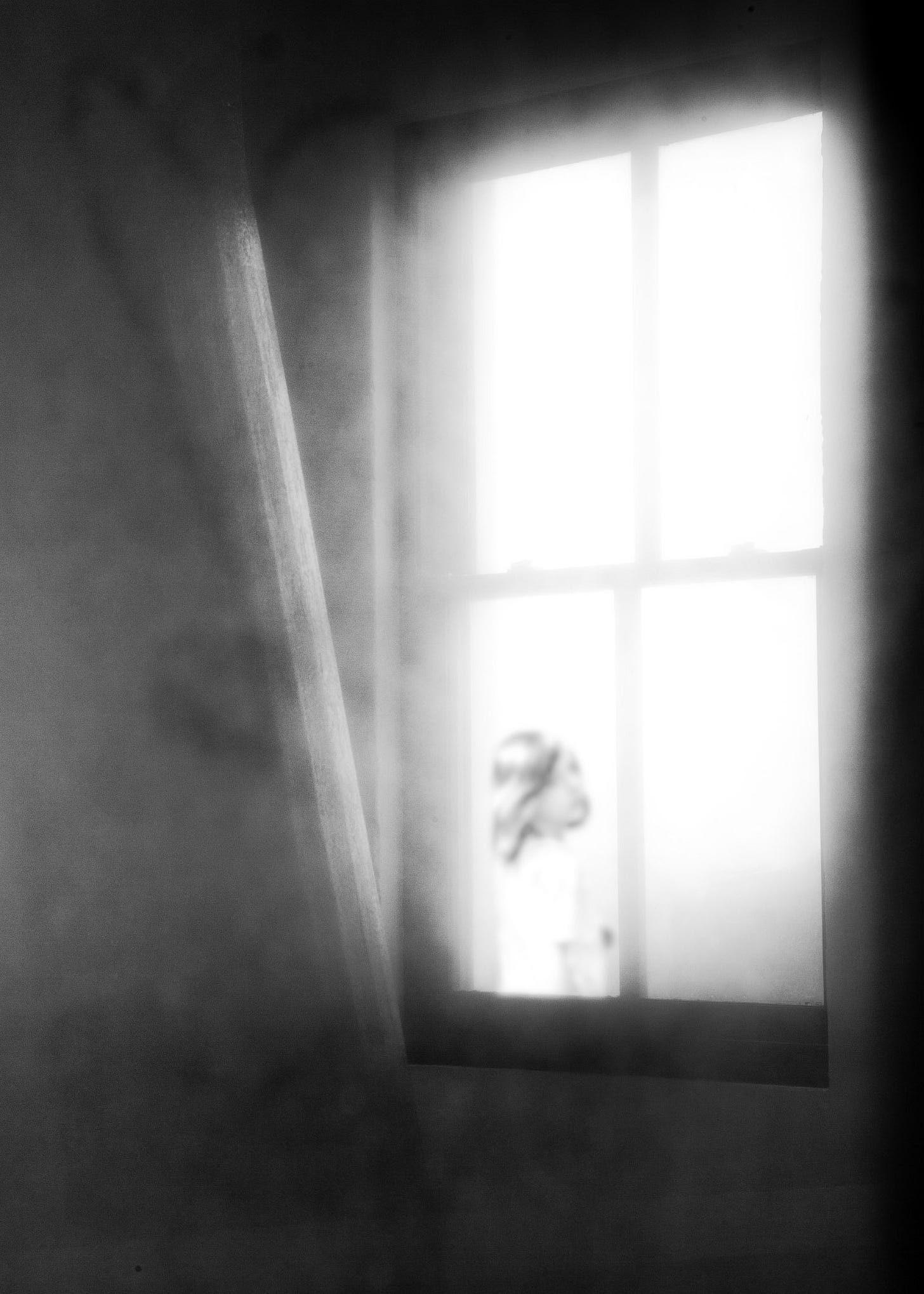The Shift
For years, I was a wedding and portrait photographer — and a good one. But when you work for clients, your creativity lives inside client boundaries. You photograph their locations, their timelines, and what they’re really hoping for: great photos of all the moments and all their loved ones and especially them, the bride and groom.
There’s creativity in that — you study, you plan, you walk in prepared, you adjust in the moment, and you hope it works. You find ways to create beautiful images in the middle of someone else’s day. It’s fast, and it’s very specific.
Then I stepped away from client work. And I found myself completely lost.
Without a timeline or a shot list, without an event unfolding in front of me, I had to figure out how to photograph for myself again — and I didn’t know where to start. For years I had been working inside a structure, where my subjects were pre-planned, week after week. Now, the structure was gone. And so was the clarity that came with it.
In response, I joined clubs and groups, submitted images, entered competitions. And for a time, that helped. I learned. I grew. I was staying busy with my camera.
But over time, I realized I was getting pulled into that collective of collective thinking — focused on technical precision, but rarely touching on artistry. I wanted to create photographs that felt personal and meaningful — but the systems I was in rewarded something else. The emphasis was always technical: sharpness, exposure, clean edits, correct composition (as defined by someone else).
And little by little, I could feel the joy leaking out of photography. I started to wonder: is this it?
And then, thanks to my dear friend Candie, I discovered David duChemin.
His book, The Heart of the Photograph, found me exactly when I needed it. In his words, I heard what I didn’t even know I’d been searching for. He wrote:
“Don’t ask if it’s good. Ask if it’s yours.”
And even more:
“Be an anarchist.”
Make the photographs that are yours to make, not the ones you think you're supposed to make.
Reading those words flipped my world upside down — and opened it up.
He wasn’t teaching me how to use my camera. He was teaching me how to use me.
The shift wasn’t a gentle breeze. It hit like a Santa Ana wind. What should have been obvious landed like a revelation: I didn’t need anyone’s permission to make the photographs I wanted to make. But somehow, I needed someone to tell me that anyway.
Once that door opened, I couldn’t shut it again. I backed away from the clubs and competitions and a co-op gallery. And while leaving those circles meant losing a kind of community, it also gave me something far more important: freedom.
Freedom to make honest work that feels true to me.
Freedom to chase my own voice.
Freedom to photograph like an artist — not a technician.
Original Title: “summer hearts”, June 2023
Not long after this shift began, I made the photograph that confirmed I was on a new path. It’s a simple photo of my granddaughter, shot through two dirty windows. The grime created natural layers and a soft glow. She’s out of focus and while I like that about this photo, it also seemed to represent out of reach. In post-processing, I noticed two faint hearts drawn on the glass closest to me — two hearts, hers and mine, separated by time and distance, but bound by love.
That distance isn’t just space. It’s years. It’s stages of life. She’s at the very beginning of her story — full of energy and possibility, standing firmly in spring. She’s looking back at me as she moves forward. And I’m somewhere later. Autumn, maybe. Hopefully. She’s leaving me behind.
And between us live the things that belong to her world and not mine — the music, the culture, the language of youth that sounds so foreign and makes me feel foolish when I have to look it up. Still, no matter how close we stand, time has carved an unbridgeable distance between us.
As I sat with this photograph afterward, feeling all the feels — underneath it all, there was an ache. That ache planted the seed for something I’m still exploring: a project of vague ideas and imagery, but definitely about generations, about connection and separation, about the time and distance between us.
At some point, I knew this is what making art feels like.
That was the shift — from technician to artist, from taking photographs to making work that carries emotion and meaning.
I’m still figuring out where my voice will take me. But for the first time, I knew I was headed in the right direction.
A small moment from this week
And sometimes, it’s as simple as standing in a field at dawn, watching hot air balloons rise against a perfect morning sky.
It was one of those mornings that reminds me exactly why I love having a camera in my hands: to hold onto a little piece of a good day, long after it's gone.
But as I’ve discovered, it’s not always just one image. Often, it takes many.
That part of my journey — the storyteller’s part — is unfolding now.
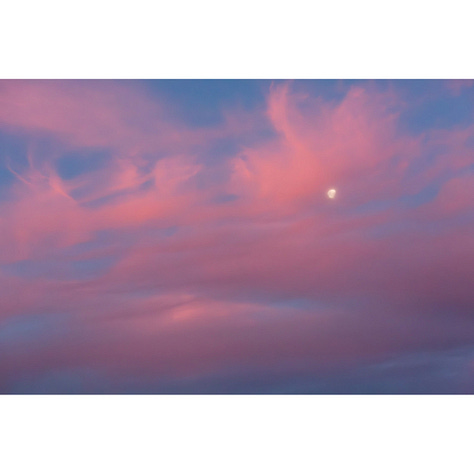
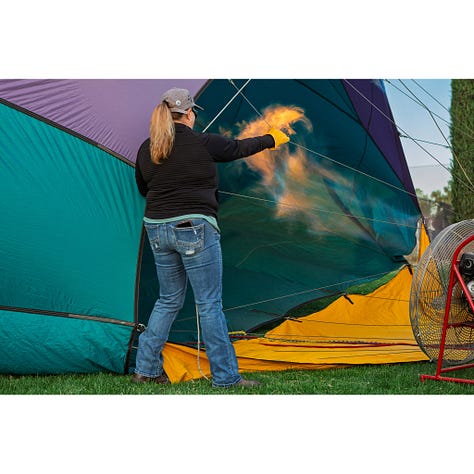
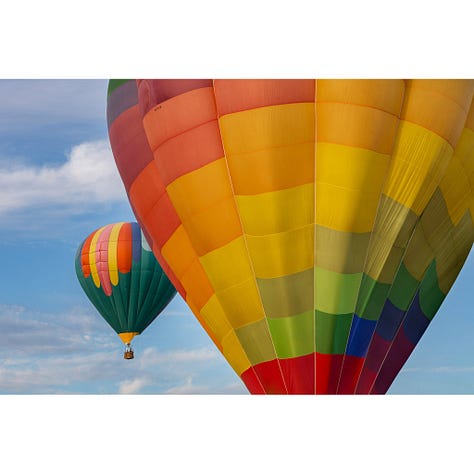


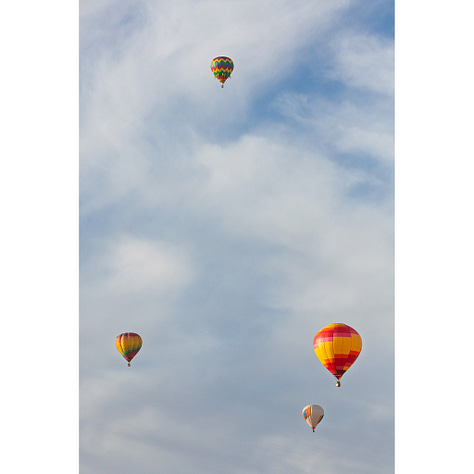
More soon.
—Denice





